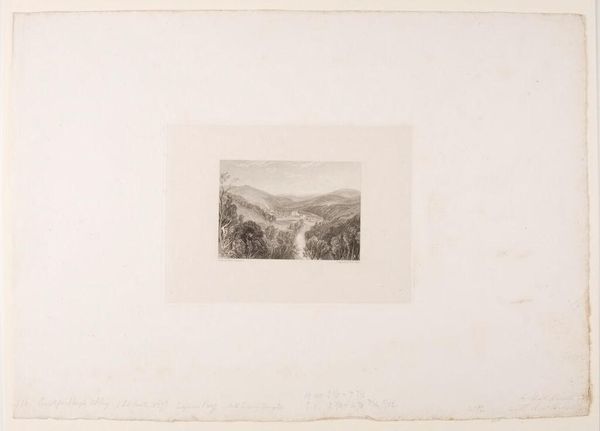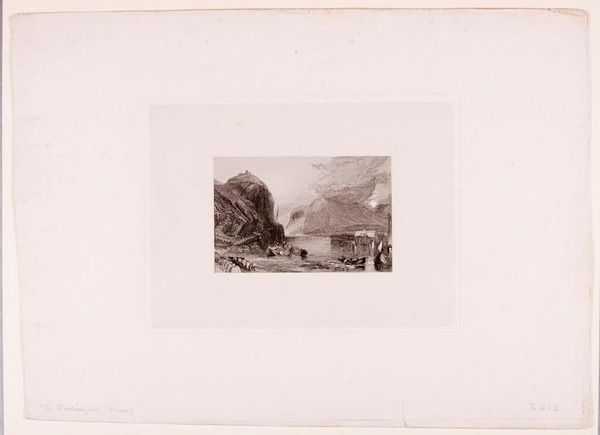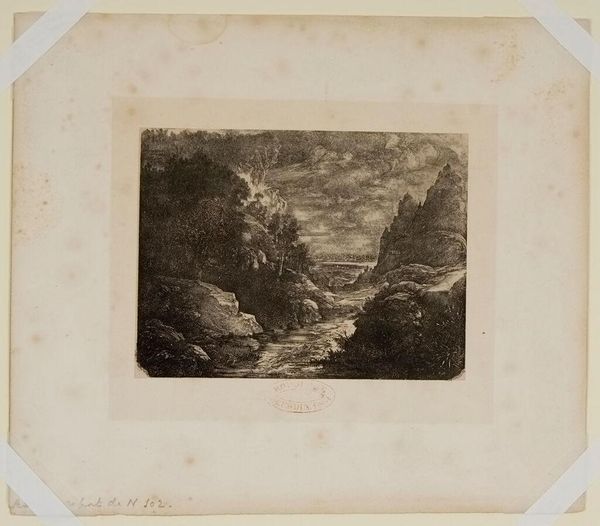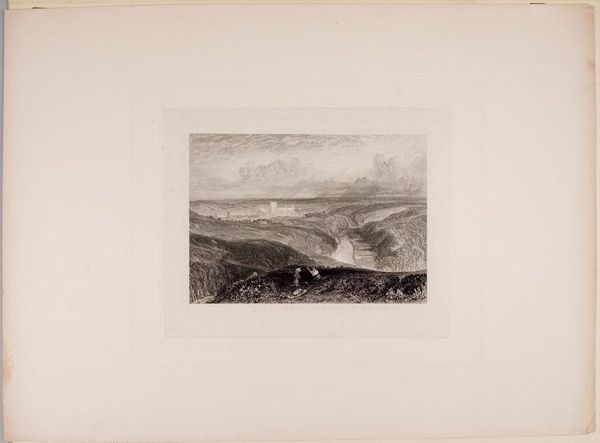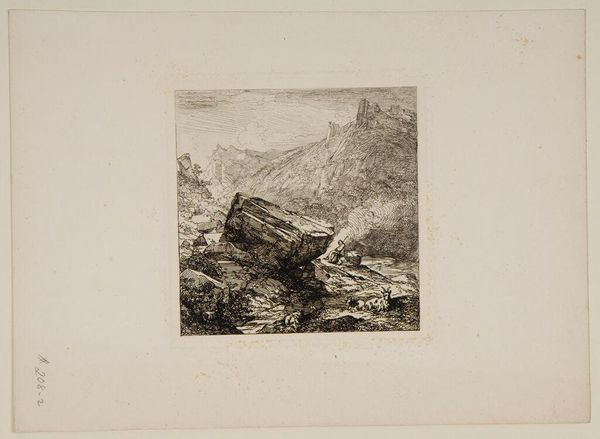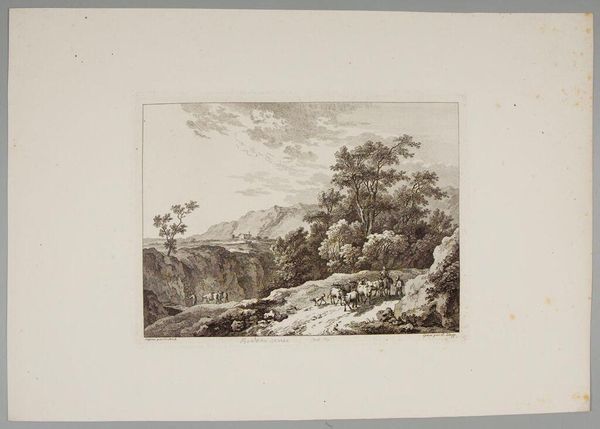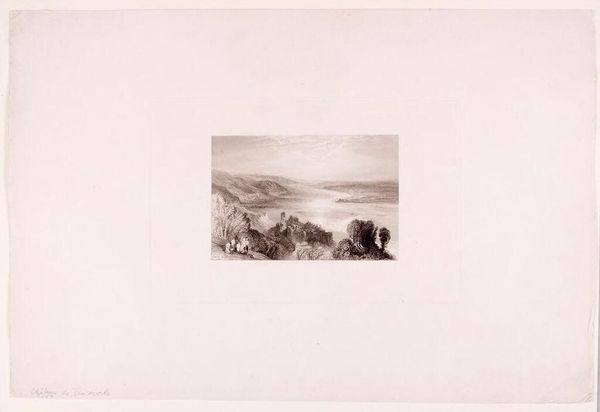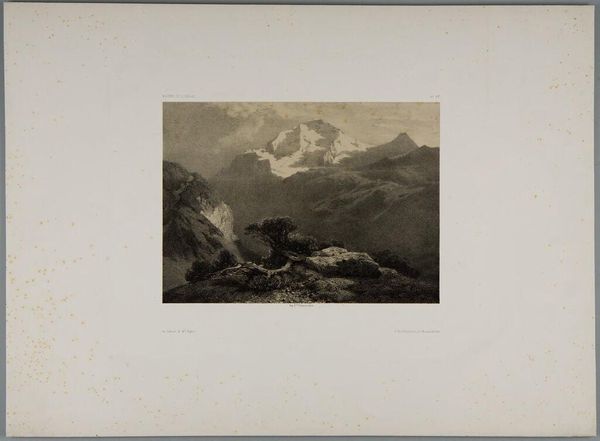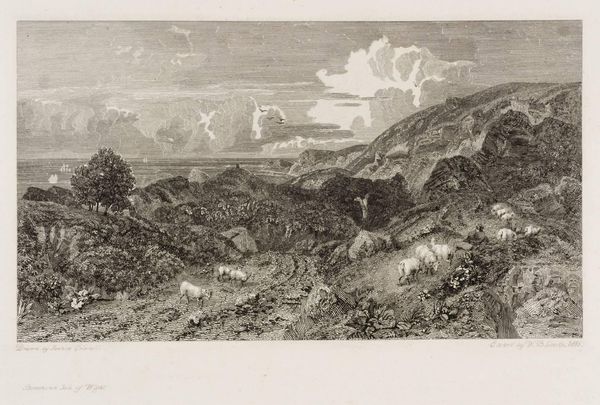
Copyright: CC0 1.0
Curator: George Cooke’s “Parnassus” presents a classical landscape, rendered with a delicate touch. Editor: It's immediately striking—a kind of Romantic sublime shrunk down to an intimate scale. The cascading water and looming mountains evoke both awe and a sense of human insignificance. Curator: Cooke’s choice of Parnassus, the mythological home of the Muses, connects this scene to broader narratives of artistic inspiration and cultural memory. It taps into the deep well of classical idealism. Editor: I see how the waterfall could be read as a symbol of creative outpouring, but what about who has access to the Muses and to creating their own art? The figures at the base are almost swallowed by the scene. Who are they? Curator: The figures represent a moment of contemplation and reception of the scene, while the landscape itself speaks to a romanticized notion of the “untouched” natural world, often obscuring the impact of human presence and historical power dynamics. Editor: I suppose that in the end, it shows the power of the land to define us, for better or for worse. Curator: Precisely. It's a reminder that even in the grandest landscapes, narratives of power and identity are always at play.
Comments
No comments
Be the first to comment and join the conversation on the ultimate creative platform.
